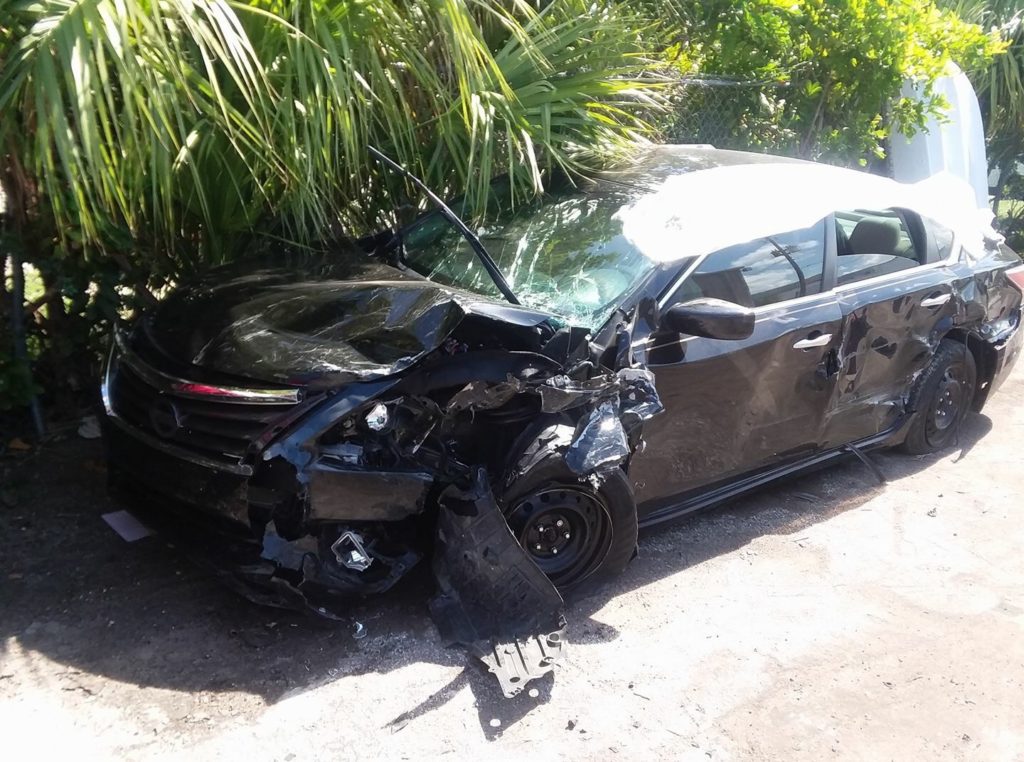
NOTE: Recommendations about rear facing car seats have been updated since the publication of this post. Please link here.
This photo above is a horrific yet terrific reminder of why we strap our kids into car seats. This child was buckled into a car seat when the unthinkable happened— a potentially lethal car accident. As you can see, the child’s bruises directly line up with properly-applied car seat restraints. Thankfully, the injuries to this child are only skin-deep. On the other hand, the photo below shows what happened to the car.
Please remember always to travel with your children properly restrained.
For maximum safety in cars:
- Keep children in rear facing car seats until age two years. Usually they will outgrow the baby car seat that you brought them home in and you will need to install a new rear facing car seat before they reach two years. Check the weight/height limits for the seat.
- Keep them in the car seat until age five years, or until they outgrow the weight or height limits set forth by the car seat manufacturer.
- Use a booster until your children are 4 feet 9 inches or until the car’s shoulder seatbelt falls naturally across the chest (not the neck) and the lap belt lies low across their hip bones (some kids are in boosters to age 10 years and beyond).
- Keep infants and children in the back seat until at least age 13 years.
- Don’t drive while distracted or sleep deprived. Children learn from watching their parents. Emulate now the way you want your 16-year- old to drive.
Your can read more details on car seats and seat belts on the CDC (Centers for Disease Control) website here.
Read about guidelines for child safety restraints on airplanes here.
Julie Kardos, MD and Naline Lai, MD
© 2017 Two Peds in a Pod®, photos used with permission




